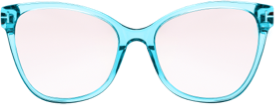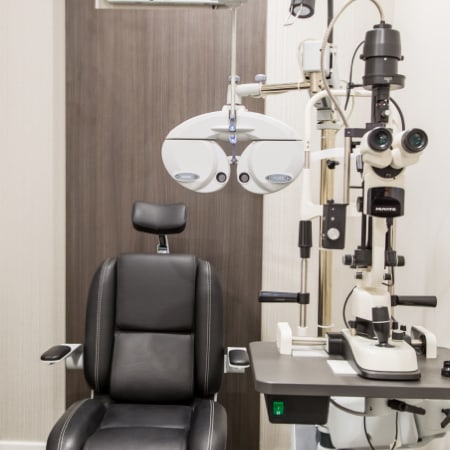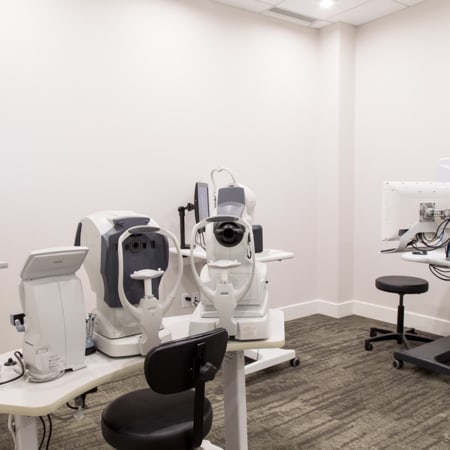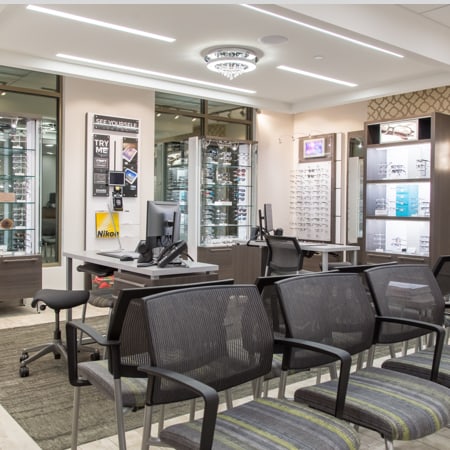Dry, itchy eyes—sound familiar? If you’re someone who experiences the discomfort of dry eye syndrome, you know how much it can impact your daily life. While dry eye treatments from your optometrist can provide relief, sometimes finding at-home treatments to alleviate dry eye symptoms is more convenient.
One common at-home dry eye treatment is using an eye mask. Incorporating an eye mask into your routine may help you find relief from the short and long-term effects of dry eye. Eye masks can provide dry eye relief by helping unclog oil glands in your eyelids to encourage tear production or by helping reduce inflammation.
What Is Dry Eye?
Ocular surface disease, or dry eye, is a common eye condition among Canadians. Dry eye occurs when your eyes either can’t produce enough tears or your eyes produce tears that dry up too quickly. When your eyes can’t make enough high-quality tears, the surface of the eye called the cornea becomes dry. This dryness can lead to irritation and itching in the eyes. Dry eye may look different for everyone, but common symptoms include:
- Itchy eyes
- A burning/gritty feeling in the eyes
- Excessive tearing
- Redness around eyes
- Light sensitivity
- Mucus around the eyes
- Pain when wearing contacts.
Dry eye is easily treatable, but if left untreated for prolonged periods, dry eye may lead to scratches and damage to the cornea. This means it is important to consult your optometrist if you have any dry eye symptoms.
Many things can cause dry eye. Some factors that increase your chances of experiencing dry eye are:
- Being a woman.
- Being over the age of 55.
- Taking certain medications like antidepressants or blood pressure medications.
- Spending time in dry and windy environments.
- Having meibomian gland dysfunction.
Eye Masks: An At-Home Solution?
Eye masks are one method you can use to help with dry eye symptoms. Eye masks can work by using either heat or cold.
When the glands in your eyelids responsible for producing the oils that keep our tears from evaporating too quickly become blocked, dry eye can happen. Some eye masks use heat to soften the hardened oil blocking these glands. Once this oil softens, your tears will be protected from evaporating, allowing you to avoid dry eye. Warm masks like Bruder Masks can offer temporary relief after 8-10 minutes of use.
Other masks are aimed at treating the inflammation caused by dry eye. These masks are like an ice pack for your eyes. By reducing the inflammation around the eyes you may find temporary dry eye relief.
Eye masks are very easy to use. Warm masks only need to be microwaved for short periods before they are ready to use. Cool masks can be applied immediately if stored in a cool place. If you’re confused about what eye mask is right for you, you can consult your optometrist.
How to Use Eye Masks Effectively
Using an eye mask effectively is crucial for success. First, ensure your eye mask is clean and free from any irritants. If it’s reusable, wash it according to the manufacturer’s instructions between uses to maintain hygiene.
For heat masks, follow the heating instructions carefully. Overheating can damage the mask or injure your skin. Typically 20-25 seconds in the microwave is all that is needed. Once heated, place the mask over your closed eyes and wait for 8-10 minutes. This can be a perfect opportunity to take a moment for yourself.
If you’re using a cooling mask, allow it to chill in the refrigerator or freezer before placing it over your eyes.
Common Concerns & Misconceptions
Some people may have reservations about using eye masks for dry eyes. Common concerns include worries about hygiene, effectiveness, and potential skin irritation. However, these potential downfalls can be easily avoided.
One misconception is that eye masks may harbour bacteria. While it’s true that any reusable item can become a breeding ground for germs, proper cleaning can easily mitigate this risk. Most masks come with cleaning instructions so you can keep your mask clean for each use.
Another concern is about their effectiveness compared to traditional treatments. While eye masks are unlikely to replace medication and in-office treatments recommended by an optometrist, they can be an excellent complementary treatment. Plus they can help during unanticipated flare-ups while you wait to see your optometrist.
Finally, some worry that eye masks may irritate the skin. Generally, eye masks are designed to be skin-friendly, but always wise to check labels if you have sensitive skin. If you are concerned that an eye mask may irritate your skin, use it on an area of skin away from your face first. If you think an eye mask is irritating your skin, stop using it immediately and consult your optometrist.
Are There Other Dry Eye Treatments?
While eye masks are one way to treat dry eye, they may not be right for you. Luckily, there are many dry eye treatment options available. If you want another at-home treatment some options are:
- Artificial tear eye drops
- Eyelid cleaning gels and wipes
- Omega-3 supplements.
At-home treatments work best when used alongside in-office treatments for dry eye. It is important to consult your optometrist if you are going to be using any at-home dry eye treatments.
In-office dry eye treatments are done by eye care professionals. Having in-office treatments is beneficial as it allows your optometrist to monitor your dry eye symptoms and eye health needs. Some common in-office treatments include:
- Eyelid cleaning treatments
- Intense Pulsated Light treatments (IPL)
- Radiofrequency and Thermopulsation treatments.
Find Your Dry Eye Solution
Eye masks are a simple, cost-effective solution to dry eye for all lifestyles. By understanding how they work and choosing the one that best suits your needs, you can take steps toward improving your eye health.
If you’re curious to learn more and explore additional solutions, our team at Bluewater Optometry would be more than happy to help you find an eye mask that suits your needs. You can contact us or book an appointment with us today.















